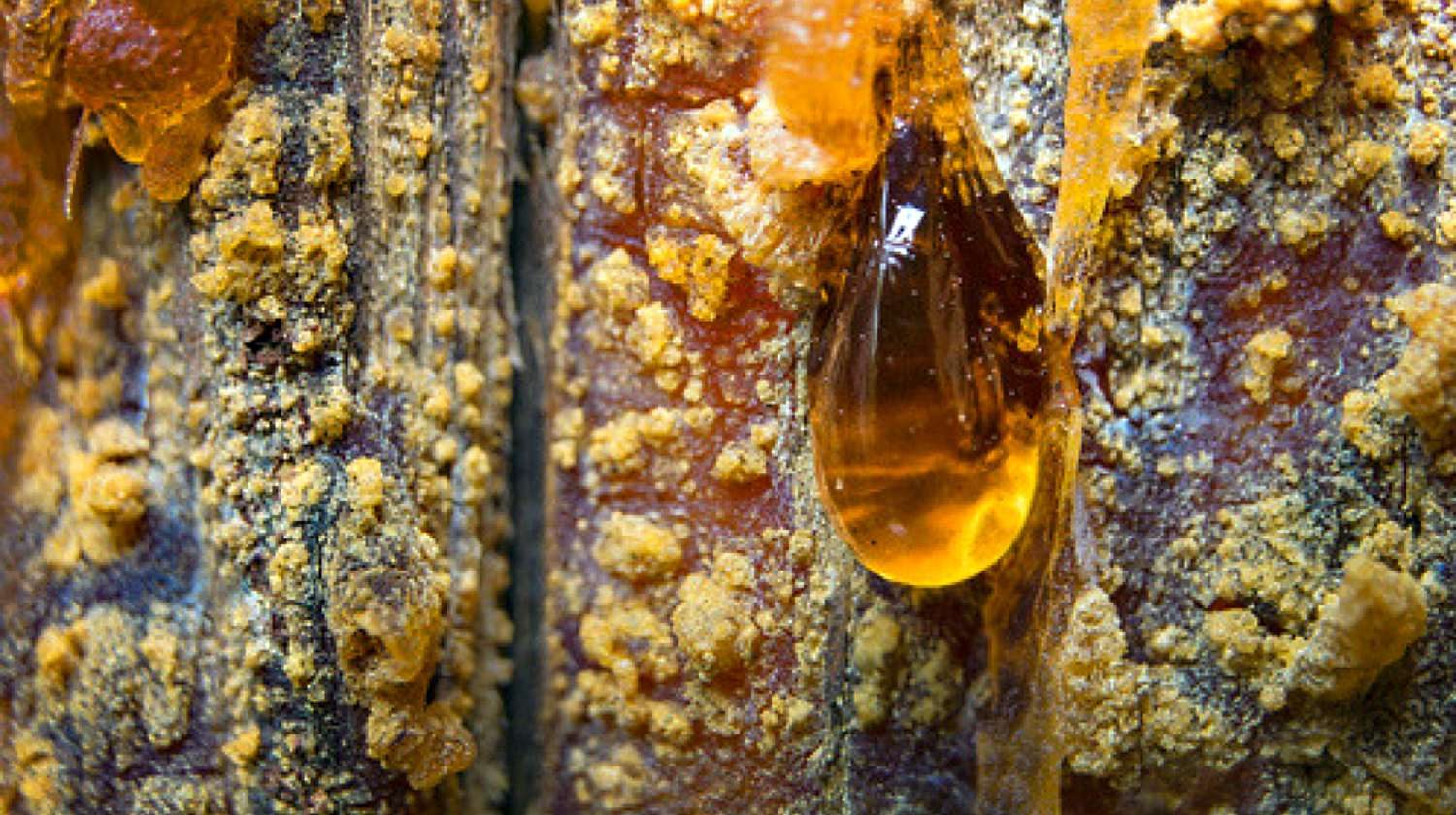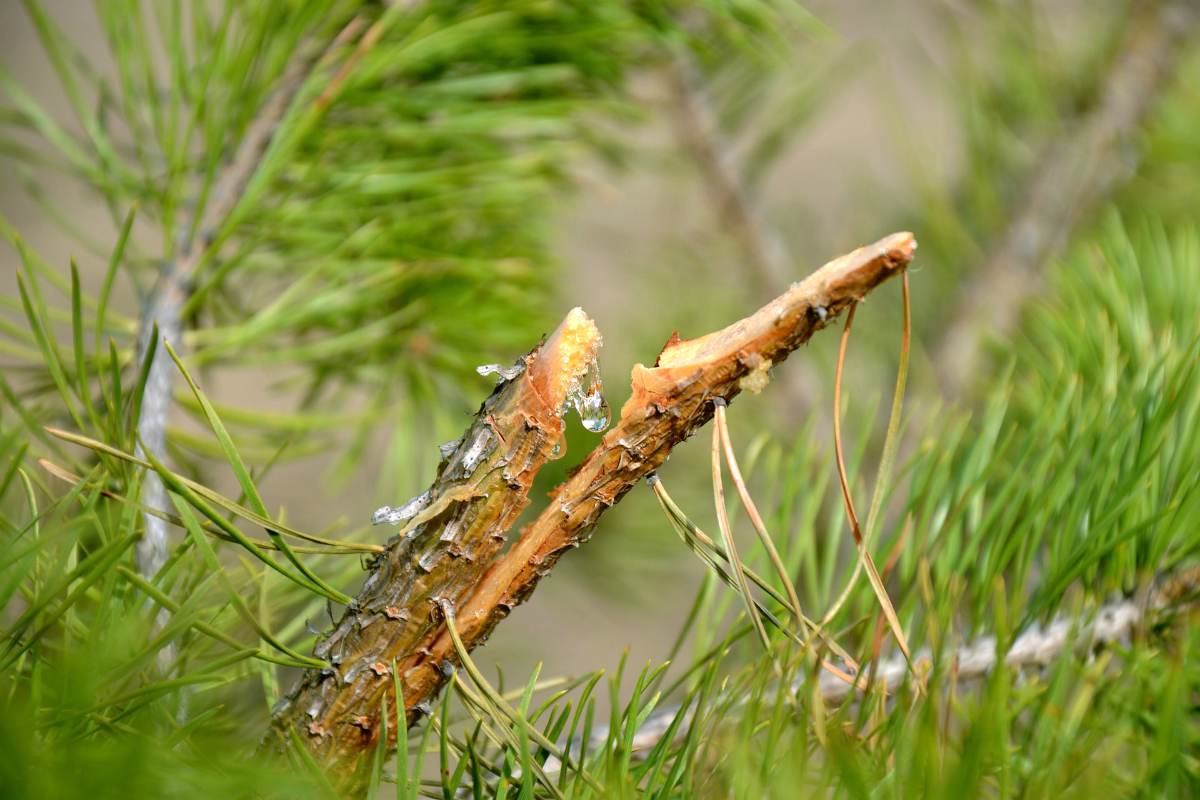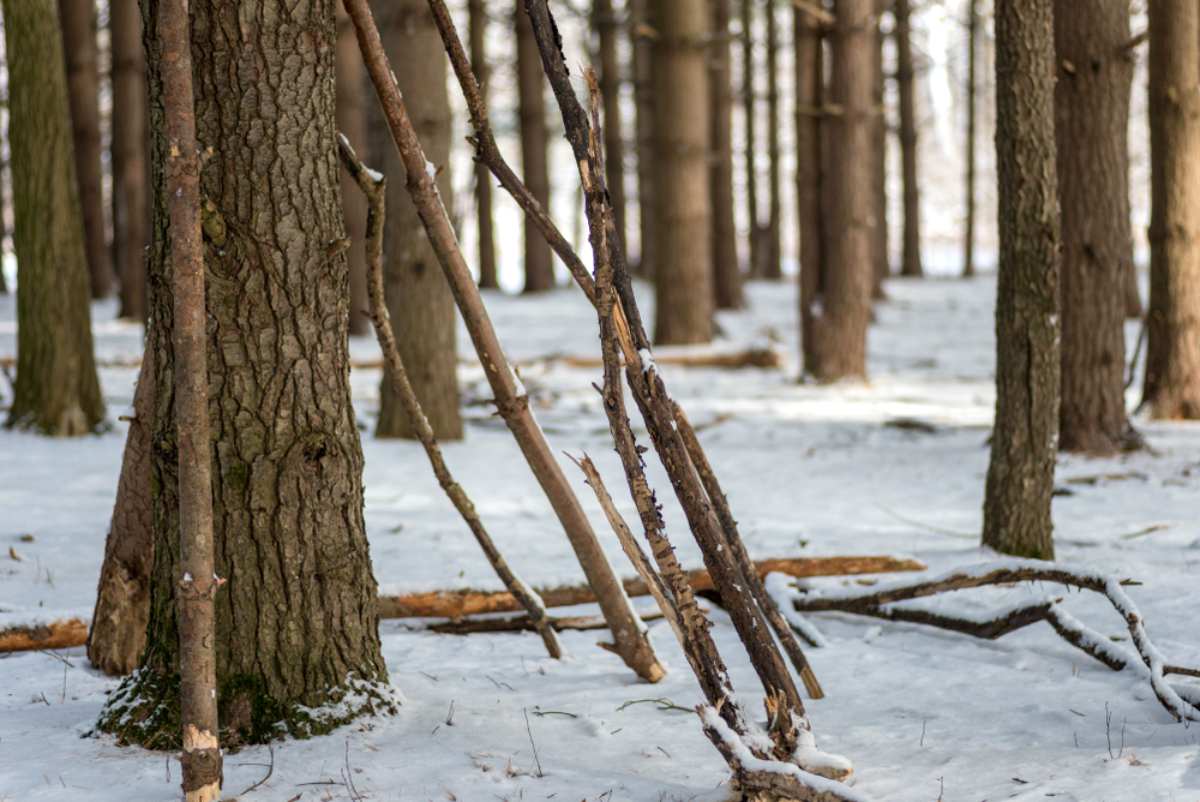Medical Care
7 Survival Uses Of Pine Resin

In tough survival situations, you must know how you can use pine resin to your advantage!
Pine Resin and the Ways You Can Use It for Survival
A Little About Pine Resin
Growing up in the Piney Woods of East Texas, I am now well-accustomed to the scent of pine resin. While camping out for weeks at a time, my uncle always hikes out into the area of pine forests surrounding our campsite.
That’s where he finds good and solid pine trees to pull some sap from so we could get a fire going the “old fashion” way. But, I never realized how many other uses there were for pine resin.

(Please note, I take no credit for this article. It was originally run on beforeitsnews.com, by crisissurvivortips, and just happened to catch my eye.)
Pine trees produce sap to seal up cuts or damages to the tree. That’s good news for both the tree and you because pine resin has many uses for survival.
So, if you ever find yourself lost in a wilderness environment while hiking, having pine forests in the area is one of the best case scenarios you can hope for.
Where Do You Find Pine Trees?
Different species of pine trees have different needs and environments but they generally prefer open and sunny areas. They grow in a wide range of landscape and climate all throughout the world.
Pine trees grow abundantly throughout North America, Central America, and South America. They are also found in Europe, North Africa, in the Caribbean region, and in some places in Asia.
You will identify where pine trees are according to the environment. A well-draining and sandy soil are where pine trees often grow.
You can also identify pine trees by looking at their structure. They have softer needles that grow in clusters and cones that hangs toward the ground.
How to Collect Pine Resin
Make sure you know how to collect pine resin safely first before scratching into trees. Look for the damaged part of the pine tree because it will be where the resin production is.
The resin will be dry and hardened but softens with heat. Look for damaged or fallen limbs first before you purposely cut into the pine tree’s bark for the sap.
If you have to damage the tree, do it in a small area on one side only. More importantly, take only as much resin as you will need and leave some on the tree to protect the cut from boring insects.
Pine Resin Uses
Native Americans used pine sap for medicinal purposes. The pine gum resin gets either chewed on or made into a beverage by mixing with water.
It is common knowledge to be very effective in treating stomach ulcers and rheumatoid arthritis. Pine tree sap medicinal uses are common to locals, but modern medical experts have not verified the medicinal benefits of pine resin, yet.
Besides pine sap medicinal uses, there are other survival uses and even commercial uses for pine resin. One is the sale and manufacture of pine resin incense which is an effective natural mosquito repellent. Help yourself to more uses for pine resin.
1. First Aid
First off, you need to know the medicinal uses of resin. When you’re outdoors camping or in a survival situation, cutting accidents will most likely happen.
If you don’t have a first aid kit with you, then you can use pine resin to tend to wounds. Directly apply pine resin over the wound to stem blood flow almost at once.
The resin will also inhibit the growth and spread of bacteria because of its sticky nature, denying the bacteria the moisture it needs to survive. Just leave the resin in place until it dries out and then peel it out.
The resin will close the wound up the same way stitches would and you may reapply resin as needed. Furthermore, here is an in-depth look into the use of pine resin for treating wounds.
RELATED: How To Find Edible Plants In The Wild
2. Waterproof Your Shoes and Other Survival Items
Another useful item in the tree resin uses list is making things waterproof. First, heat the resin to liquid form and then apply it to the material you want to make impervious to water like the lower half of your hiking boots.
You can also use resin to seal seams, repair holes in shoes, boats, or structures to prevent leaks. When heating the resin, use a deep container to keep the sap away from open flame because it can ignite easily.
3. Light and Heat
You can make a lamp using pine resin. Look for a stone with depression, a can, a clamshell, or anything which can be filled with resin.
For a wick, use some twisted cloth. Fill the depression with the natural resin, lay the wick on top, and ignite the wick.
The wick material will ignite the resin which will burn like a candle. Feed more resin to maintain the flame.
To use the pine resin as a heat source, get a metal container and punch holes in its side. Place it over the ignited resin.
The metal will absorb the heat and conduct to the surrounding area. This will not heat a large area but you get enough heat to warm hands and feet.
4. Make Glue Out of Pine Resin
Heat the resin to liquid form. While the pine resin heats, crumble some charcoal from the fire to fine powder (or as fine as you can make them).
When the resin is ready, remove from heat and stir in the powder charcoal – the amount of the charcoal powder should be about 1/3 of the resin’s volume.
Dip a stick repeatedly in the mixture to form a ball of pitch on the end. Store the glue until needed. Heat the hardened glue until pliable.
Tip: You can form fishhooks with the glue, repair holes in water containers, repair the soles of shoes, apply feathers to homemade arrows, or harden the ends of hunting spears to keep them from splintering.
5. Start a Fire with Pine Resin
You can use pine resin to start a fire in damp conditions. Look for some hardened pine resin and some pine sticks.
You will see streaks of resin when you split the pine sticks. Lay some dried pine needles near these.

When you ignite the resin, it will burn long enough to dry the pine needles. You can then add small pieces of the pine sticks which will burn even if somewhat damp because of the resin.
Once you’ve got a sizable flame going, you can start drying out other wood.
6. Treat Rashes
When you’re out in the woods, it’s often you encounter unfamiliar substances. These can make your skin itch and give you rashes.
Luckily, there are home remedies you can use to get rid of rashes and pine resin’s sap has a natural treatment for this. You just need the help of fire ash and oil to mix it with the pine sap.
And there you have it: moisturizing soap to treat rashes!
7. Soothe a Sore Throat
Another survival use of pine resin is to soothe a sore throat. You can get the sap directly from the tree and eat it. This will help soothe and coat your throat, especially if you’re feeling under weather.
To give you more details, here’s a video from The Outsider’s channel featuring one of the survival uses of pine resin:
Now that you know the uses of pine resin, you’ll know how to survive in case you find yourself trapped in the woods. May this list serve as a handy guide for you and your friends if you ever plan to go out for a hike.
It pays to prepare for whatever situation you may encounter, plus foraging and using the land to survive is a must-have survival skill, indeed!
Do you have anything else to add to our list of survival uses of pine resin? Tell us in the comments section below.
UP NEXT:
- 6 Adaptogenic Herbs To Relieve Stress In The Wilderness
- 7 Coconut Uses For Survival When You Have Nothing Left
- 27 Surprising Uses For Salt
If you’re looking for useful survival gear you can’t make at home, check out the Survival Life Store!
Follow us on Facebook, Instagram, Twitter, Pinterest, and Tumblr!
Disclaimer: The contents of this article are for informational purposes only. Please read our full disclaimer.
Editor’s Note: This post was originally published on November 23, 2018, and has been updated for quality and relevancy.
-

 Do It Yourself7 months ago
Do It Yourself7 months agoParacord Projects | 36 Cool Paracord Ideas For Your Paracord Survival Projects
-

 Do It Yourself9 months ago
Do It Yourself9 months agoHow To Make Paracord Survival Bracelets | DIY Survival Prepping
-

 Do It Yourself9 months ago
Do It Yourself9 months ago21 Home Remedies For Toothache Pain Relief
-

 Do It Yourself10 months ago
Do It Yourself10 months agoSurvival DIY: How To Melt Aluminum Cans For Casting
-

 Exports8 months ago
Exports8 months agoAre Switchblades Legal? Knife Laws By State


carlrobison
November 25, 2013 at 10:06 AM
good stuff
Dave
November 25, 2013 at 4:11 PM
These short pieces on basic uses of outdoor resources are the best thing you guys can share. Thanks.
John Bush
November 25, 2013 at 6:26 PM
G R E A T stuff !! I am a survival instructor for the Boy Scouts and I really appreciate this kind of stuff. Please keep it coming.
Lee
November 26, 2013 at 10:42 AM
When we were kids, mom would give us some pine pitch with sugar to chew as gum.
Joel
November 26, 2013 at 6:12 PM
This definitely was a good pitch on a sticky subject…keeps me pining fir more.
Farmist
November 30, 2013 at 10:29 PM
Bravo, well played.
Brian Hill
November 30, 2013 at 4:00 PM
Love it, good stuff keep it coming!! I am lie you as i would rather read and study than watch TV or anything inside, If i am not out in it, i love to read/lean about more
Bill Dwoner
November 30, 2013 at 4:47 PM
I am making a notebook of all these tips for future use, thanks for all you guys do…..
SkiIdaho
November 30, 2013 at 11:00 PM
I repaired a 14″ gash in a fiberglass canoe keel with a resin/dry cattail stalk patch. Broke canoe on day 2 of a 5 day trip and the patch worked the remainder of the trip. Had to use a heat gun to remove it for the fiberglass patch.
vickie
December 1, 2013 at 10:24 PM
I love this site. I have learned and remembered things I had already learned as a kid, that I had forgotten about over the years. It’s really informative and I love it! Thanks 🙂
Ernie Braswell
December 6, 2013 at 9:57 PM
Fur, and Spruce can be used for the same thing. In colder climates these are more abundant then pines are and should be treated the same way.
todd Barnes
January 9, 2014 at 11:55 AM
“Cutting accidents will almost always happen”? Perhaps you should research or write an article about knife/axe/saw safety.
Anita
October 2, 2017 at 12:22 AM
If you find yourself barefoot in the forest, you can protect your feet by walking in sap drippings and then walking on pine needles until a thick layer adheres to the sap.
Gregory Skannal
November 19, 2017 at 1:43 PM
For a better glue (depending on use) add in rabbit turds. The fine fibers in the turds help to keep everything adhered. 3 parts each (resin, charcoal, turds).
Harvey sarven
May 2, 2018 at 10:48 AM
I am a scoutmaster and I don’t always keep this gear I usually give it to the younger generation to use because I’ve just about used out all my gear I’d rather see them enjoy it and use it then it lay around somewhere
Pingback: Don’t Miss These Posts On Survival Life… | survivalisthandbook.com
ivan adolph
August 1, 2018 at 12:36 PM
great info. thanks for sharing. looking forward for more.
Pingback: 7 Survival Uses Of Pine Resin | Life Off The Grid
Pingback: 7 usos de sobrevivência de resina de pinheiro – Guia Byte
Pingback: Survival Uses for a Tin Can | 11 Surprising Usage | Survival Life
Pingback: 11 Surprising Survival Uses For A Tin Can - Survival Patch
Pingback: 11 Surprising Survival Uses For A Tin Can – Ultimate Survival Alerts